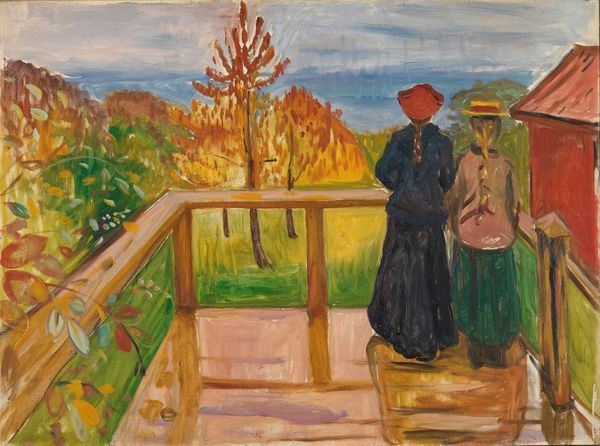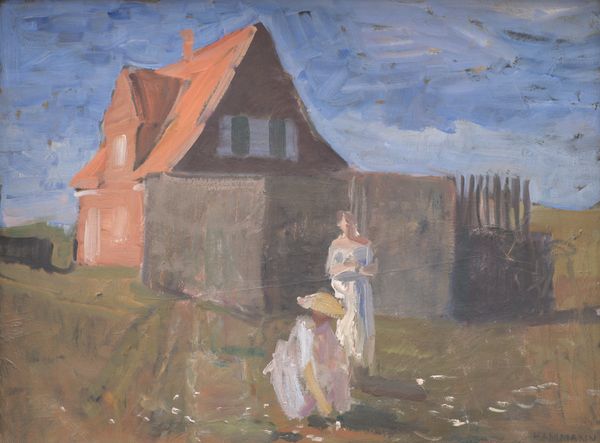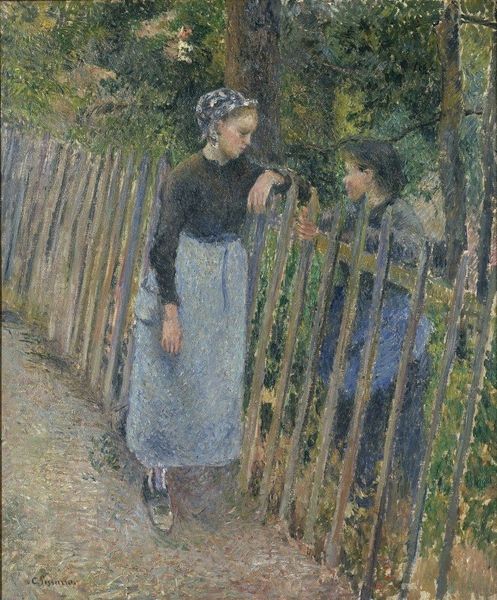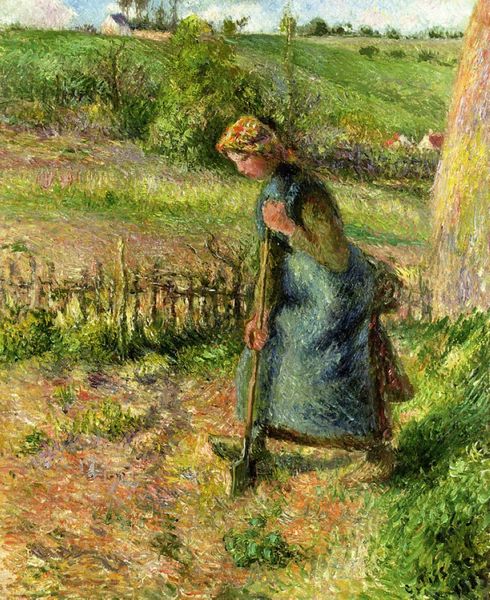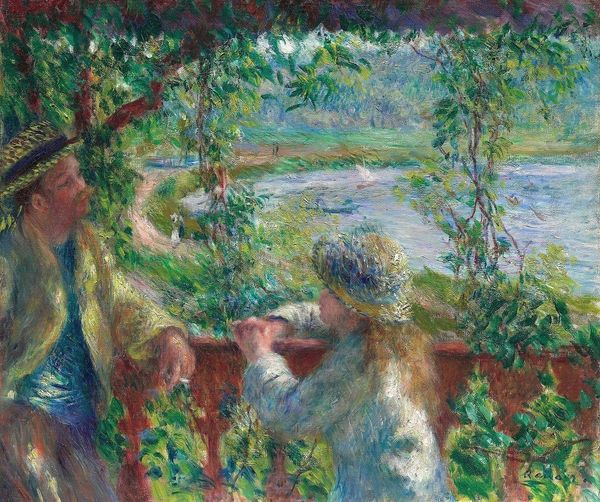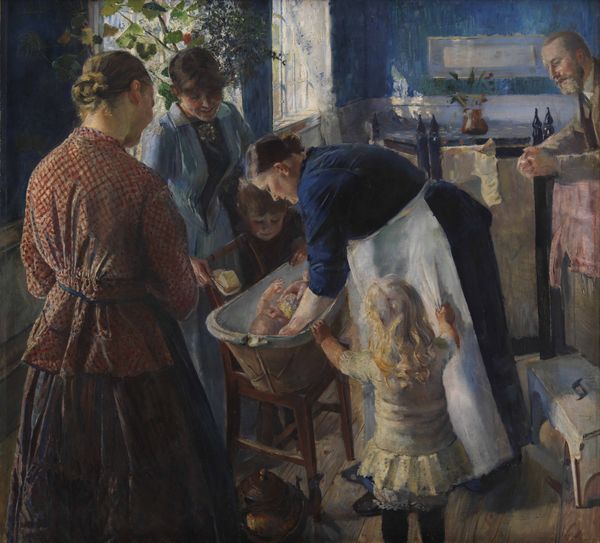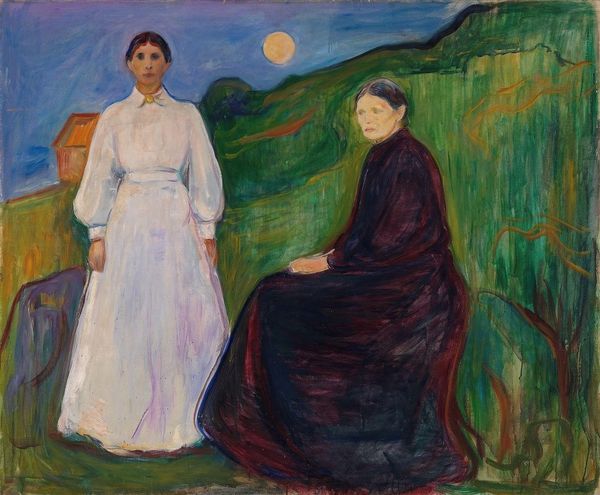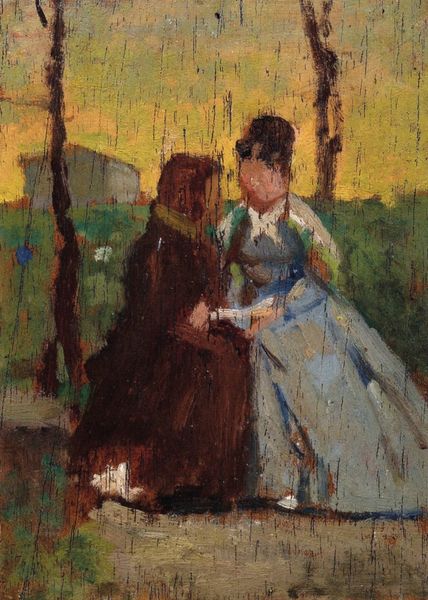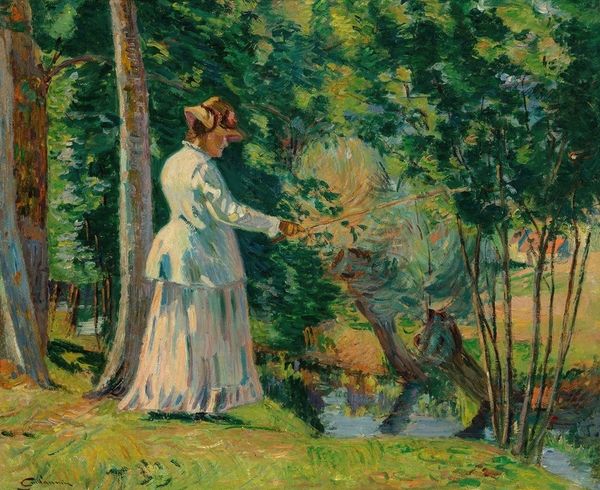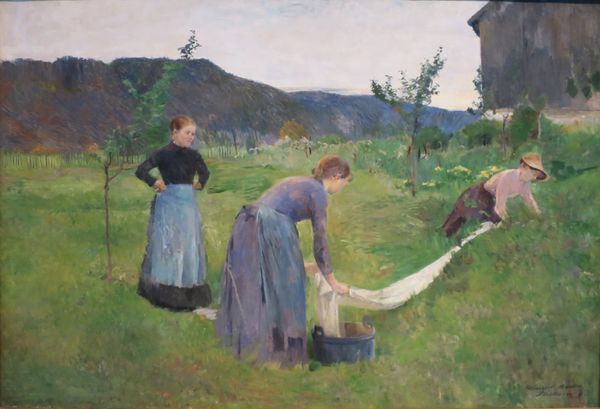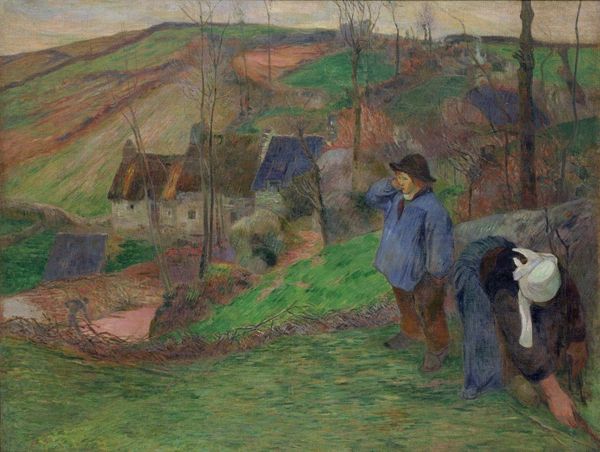
Dimensions: 150.2 cm (height) x 195.3 cm (width) (Netto), 175.6 cm (height) x 216 cm (width) x 9.1 cm (depth) (Brutto)
Curator: Welcome. Here we have Edvard Munch’s “Summer Evening,” an oil on canvas painted in 1889. Editor: Immediately striking—a hushed, melancholy scene. The cool palette and indistinct forms lend a dreamlike quality, almost like a memory fading at the edges. Curator: Indeed. Munch employed loose brushwork and subtle gradations of tone to create this tranquil atmosphere. The composition itself is rather interesting; notice how the figures are positioned on the left, balanced by the landscape on the right. Editor: The figures fascinate me. The woman’s shawl, the man’s hat…they're common images of mourning. Is Munch perhaps alluding to loss or the transience of life? Notice how the landscape beyond seems both idyllic and distant, as though unattainable. Curator: It's possible. The symbolic language certainly aligns with the Romanticism he would later reject, but this work retains those vestiges. The verticality of the figures draws the eye upward, contrasting with the receding horizontal lines of the landscape to establish spatial depth. The chromatic values of blue, green, and brown repeat themselves, tying both realms together. Editor: The color palette is a kind of cage. Blue can signal hope or promise, but also can represent entrapment. Is this couple caught between the human need for security and the untamable wild within the natural world? They're standing, but their body language reads like weariness or perhaps uncertainty. Curator: Munch's deliberate blurring of forms, especially in the foliage, anticipates his later, more overtly Expressionistic works. This, combined with the subject matter, hints at underlying psychological tensions. Editor: Perhaps we could consider them not simply as individuals but as embodiments of concepts: perhaps duty and desire. Their connection is strained, creating tension that reflects the complexities of relationships themselves. They're two people inhabiting one frame, yet their separation feels immense. Curator: Analyzing its construction, we've unlocked the painting's many dimensions, I think. Editor: It’s precisely in this duality, both aesthetically and thematically, where “Summer Evening’s” magic lies.
Comments
statensmuseumforkunst almost 2 years ago
⋮
In the summer of 1889 Munch settled by Åsgårdstrand on the west side of the Oslo fiord. Here, he staged his tales of absence and loneliness with theatre critic Sigurd Bødtker and his youngest sister Inger as models. Accurate resemblance is, however, unimportant. She appears as a middle-aged, disillusioned woman whose closed-up body language provides an icy foil to the posing aesthete. The painting is an example of Munch’s break with realism. Paints are applied in rapid, transparent brushstrokes that disengage colour from objects, imbuing it with painterly value in its own right. He also makes the bold move of working with a vertical division of the picture plane, employing the contrast between the sunlit landscape and the dark porch to poignant effect.
Join the conversation
Join millions of artists and users on Artera today and experience the ultimate creative platform.


